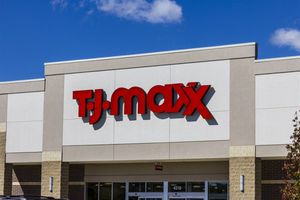The "Saudi Arabia Teleradiology Market to Reach US$ 263.93 Million by 2033 - 11.33% CAGR Propelled by AI and Digital Health" report has been added to ResearchAndMarkets.com's offering.
The Saudi Arabia Teleradiology Market is expected to reach US$263.93 million by 2033 from US$100.46 million in 2024, with a CAGR of 11.33% from 2025 to 2033.
Technological developments, more government backing, the growing need for remote diagnostics, affordable healthcare delivery, and easier access to radiology expertise - particularly in rural and underserved areas of the Kingdom - are the main drivers of the Saudi Arabian teleradiology industry. Due to a lack of infrastructure and a shortage of specialists, teleradiology adoption is slower in rural areas than in urban areas like Riyadh and Jeddah.
Saudi Arabia Teleradiology Market Overview
Saudi Arabia's goal for digital transformation in healthcare under Vision 2030 is fueling the country's teleradiology industry's explosive expansion. The enormous and widely distributed population of Saudi Arabia benefits from improved access to specialized radiology services thanks to teleradiology, which makes it possible to transmit and interpret medical pictures remotely.
This technology is especially helpful in underserved and rural areas where there is a shortage of qualified radiologists. The accuracy and effectiveness of teleradiology services have been greatly improved by the incorporation of cutting-edge technology like cloud computing, artificial intelligence, and high speed internet.
These solutions are being used more and more by hospitals and diagnostic facilities to improve patient outcomes and speed up diagnosis, particularly in emergency and trauma care settings. The market is mostly driven by government initiatives and legislative assistance, which include campaigns to encourage investment in digital health infrastructure and telemedicine.
These regulations promote private public collaborations and enable the more seamless deployment of teleradiology technology. Healthcare providers are also drawn to cost benefits from less physical infrastructure requirements and more efficient workflows. The increasing need for quick and precise diagnostics is driving the use of teleradiology, despite certain obstacles like data security issues and the requirement for qualified staff.
All things considered, the teleradiology market in Saudi Arabia is expected to grow further since it is essential to modernizing healthcare delivery and improving diagnostic capacities throughout the Kingdom.
Key Factors Driving the Saudi Arabia Teleradiology Market Growth
Better Access to Specialists
In Saudi Arabia's wide and varied landscape, teleradiology is essential for overcoming geographical constraints. Specialized radiologists are in short supply in many rural and isolated areas, which causes delays in diagnosis and treatment.
Teleradiology guarantees prompt interpretation and consultation regardless of location by facilitating the electronic transmission of medical pictures to specialists situated in urban areas. This connectivity lessens the need for patients to go to specialist institutions and contributes to equal access to healthcare.
Particularly in urgent situations, quicker diagnosis via remote expert evaluation enhances clinical judgment and patient outcomes. By enabling case discussions and second perspectives, the technology also promotes multidisciplinary collaboration, which raises the standard of treatment in healthcare systems across the country.
Growing Need for Quick Diagnostics
The need for quicker and more dependable diagnostic imaging services is being driven by Saudi Arabia's rising emergency case and trauma incidence rates. Regardless of their physical location, radiologists may deliver prompt interpretations because to teleradiology, which allows medical pictures to be transmitted in real time or almost real time.
In critical care situations like strokes, accidents, or acute cardiac events, where prompt diagnosis can save lives, this quick turnaround is crucial. Teleradiology improves patient prognosis and decreases treatment initiation delays by speeding up diagnostic workflows. Teleradiology is becoming a vital tool in contemporary acute care and trauma management as hospitals and emergency rooms depend more and more on it to manage large quantities of imaging studies effectively.
Growing Healthcare Infrastructure
Saudi Arabia is investing heavily in building new clinics, hospitals, and diagnostic facilities as part of its ongoing healthcare infrastructure expansion. Teleradiology is a crucial part of the digital health solutions that these facilities are progressively implementing to improve service delivery.
Healthcare providers can better meet patient demands and increase operational efficiency by combining cutting edge imaging technologies with remote reporting features. Scalability and flexibility in healthcare delivery are made possible by modern facilities with teleradiology technologies, which provide specialist radiology services without the need for constant on site expert presence.
Together with government programs encouraging digital transformation, this infrastructure expansion is driving up demand for teleradiology solutions and bolstering the market's general growth throughout the Kingdom.
Challenges in the Saudi Arabia Teleradiology Market
Lack of Trained Professionals
The lack of qualified individuals with training in both radiology and the technical facets of digital imaging is one of the biggest issues facing Saudi Arabia's teleradiology industry. There is a shortage of skilled radiologists in the nation, particularly those with experience remotely interpreting scans using sophisticated technologies, despite the growing demand for teleradiology services.
Furthermore, there aren't many IT professionals who can handle, maintain, and troubleshoot Picture Archiving and Communication Systems (PACS) and complex teleradiology platforms. Delays in diagnostic reporting, higher error rates, and operational inefficiencies can all be caused by this talent shortage.
Investments in workforce development, such as training courses, certifications, and incentives to draw and keep qualified workers, are necessary to address this problem.
High Initial Setup Costs
Many healthcare providers may find it difficult to implement teleradiology infrastructure due to the significant upfront costs involved, especially in smaller clinics or rural areas. Expenses include buying PACS systems, high resolution imaging equipment, secure cloud based storage, and specialized software.
The expensive burden is further increased by the need to build up encrypted communication networks to guarantee data privacy and regulatory compliance. To efficiently use new systems, staff members must also receive training, which takes time and money.
Improved availability and cost effectiveness have significant long term advantages, although adoption may be discouraged by the initial financial investment. Government assistance, financial incentives, or public private partnerships may be required to assist providers in overcoming these initial obstacles in order to successfully expand their market.
Company Analysis: Overview, Key Persons, Recent Developments, SWOT Analysis, Revenue Analysis
- FUJIFILM Corporation
- Koninklijke Philips
- General Electric Company
- Oracle Corporation
- Siemens AG
- GE HEALTHCARE
- McKesson
Key Attributes:
| Report Attribute | Details |
| No. of Pages | 200 |
| Forecast Period | 2024 - 2033 |
| Estimated Market Value (USD) in 2024 | $100.46 Million |
| Forecasted Market Value (USD) by 2033 | $263.93 Million |
| Compound Annual Growth Rate | 11.3% |
| Regions Covered | Saudi Arabia |
Key Topics Covered:
1. Introduction
2. Research & Methodology
2.1 Data Source
2.2 Research Approach
2.3 Forecast Projection Methodology
3. Executive Summary
4. Market Dynamics
4.1 Growth Drivers
4.2 Challenges
5. Saudi Arabia Teleradiology Market
5.1 Historical Market Trends
5.2 Market Forecast
6. Market Share Analysis
6.1 By Imaging Techniques
6.2 By Technology
6.3 By End-Users
6.4 By States
7. Imaging Techniques
7.1 X-Ray
7.2 Computed Tomography (CT) Scan
7.3 Magnetic Resonance Imaging (MRI)
7.4 Ultrasound
7.5 Nuclear Medicine
7.6 Others
8. Technology
8.1 Hardware
8.2 Software
8.3 Services
9. End-Users
9.1 Hospitals
9.2 Ambulatory Surgical Centers
9.3 Diagnostic Centers
9.4 Others
10. Top States
10.1 Dhahran
10.2 Riyadh
10.3 Khobar
10.4 Jeddah
10.5 Dammam
10.6 Others
11. Value Chain Analysis
12. Porter's Five Forces Analysis
12.1 Bargaining Power of Buyers
12.2 Bargaining Power of Suppliers
12.3 Degree of Competition
12.4 Threat of New Entrants
12.5 Threat of Substitutes
13. SWOT Analysis
13.1 Strength
13.2 Weakness
13.3 Opportunity
13.4 Threats
14. Pricing Benchmark Analysis
14.1 FUJIFILM Corporation
14.2 Koninklijke Philips
14.3 General Electric Company
14.4 Oracle Corporation
14.5 Siemens AG
14.6 GE HEALTHCARE
14.7 McKesson
15. Key Players Analysis
For more information about this report visit https://www.researchandmarkets.com/r/ejq090
About ResearchAndMarkets.com
ResearchAndMarkets.com is the world's leading source for international market research reports and market data. We provide you with the latest data on international and regional markets, key industries, the top companies, new products and the latest trends.
View source version on businesswire.com: https://www.businesswire.com/news/home/20250822301929/en/
Contacts
ResearchAndMarkets.com
Laura Wood, Senior Press Manager
press@researchandmarkets.com
For E.S.T Office Hours Call 1-917-300-0470
For U.S./ CAN Toll Free Call 1-800-526-8630
For GMT Office Hours Call +353-1-416-8900





